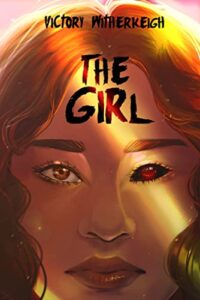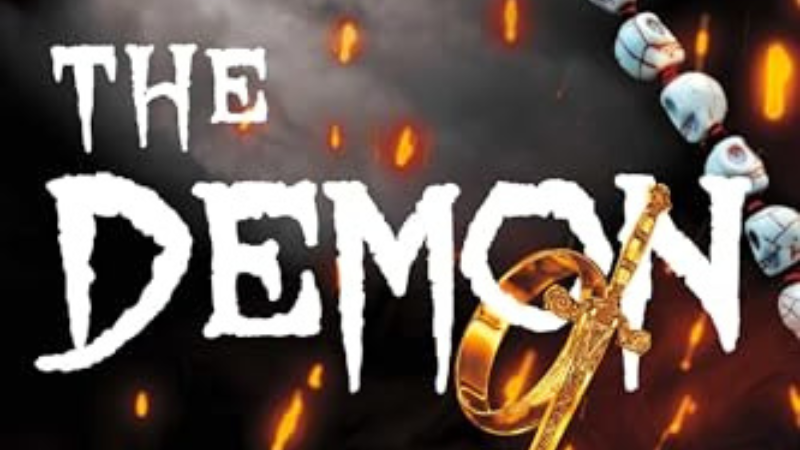Romance, academia, and Filipino deities dial up the intensity inYA paranormal fantasy
 LAS VEGAS, Nevada – A demon has possessed an 18-year-old girl and believes the hard part is over–only to discover college can be hell–in this thrilling YA fantasy continuation of The Girl inspired by Filipino mythology and gods, “The Demon” (BookBaby, Oct 1, 2024).
LAS VEGAS, Nevada – A demon has possessed an 18-year-old girl and believes the hard part is over–only to discover college can be hell–in this thrilling YA fantasy continuation of The Girl inspired by Filipino mythology and gods, “The Demon” (BookBaby, Oct 1, 2024).
Victory Witherkeigh was longlisted for the CIBA Ozma Award and a bronze winner at the 2023 Spring the Bookfest Awards. Now she continues to explore Filipina/Pacific Islander heritage by combining pre-colonial myths of gods and demons, the history of colonization in the Philippines, and all-too-relatable experiences of entering college to create an absorbing modern fantasy that first-generation American teens in particular will see themselves in.
About the book: After finally possessing the Girl’s body, the Demon is ready to execute the carefully laid plans by her former master, Death. But with no memories of the plan and only a few vague memories of a deal with Filipino warrior LapuLapu, the Demon faces punishment in the form of mortality, leaving her imprisoned in the former Girl’s university life: freshman year at UC Berkeley. Can a demon have an identity crisis?
“The Demon”
Victory Witherkeigh | Oct 1, 2024
BookBaby | YA paranormal fantasy
Paperback | 979-8350951110 | $15.99
Ebook | B0CYJQXC9Q | $4.99
VICTORY WITHERKEIGH is an award-winning female Filipino/PI  author from Los Angeles, CA. Her debut novel, The Girl, was published in December 2022 with Cinnabar Moth Publishing. The Girl has been a finalist for Killer Nashville’s 2020 Claymore Award and was long-listed in the 2022 CIBA OZMA Fantasy Book Awards. The Girl won Third Place for YA Thriller in the 2023 Spring The Bookfest Awards. Her creative content creation for her Author TikTok also won First Place in the 2023 Spring The Bookfest Awards for Creative Content. She has short story print publications in horror anthologies such as Supernatural Drabbles of Dread through Macabre Ladies Publishing, Bodies Full of Burning through Sliced Up Press, In Filth It Shall Be Found through OutCast Press, and Nightmare Fuel’s 2022 Edition: Objects of Horror, etc. Find out more about her at: https://victorywitherkeigh.com/
author from Los Angeles, CA. Her debut novel, The Girl, was published in December 2022 with Cinnabar Moth Publishing. The Girl has been a finalist for Killer Nashville’s 2020 Claymore Award and was long-listed in the 2022 CIBA OZMA Fantasy Book Awards. The Girl won Third Place for YA Thriller in the 2023 Spring The Bookfest Awards. Her creative content creation for her Author TikTok also won First Place in the 2023 Spring The Bookfest Awards for Creative Content. She has short story print publications in horror anthologies such as Supernatural Drabbles of Dread through Macabre Ladies Publishing, Bodies Full of Burning through Sliced Up Press, In Filth It Shall Be Found through OutCast Press, and Nightmare Fuel’s 2022 Edition: Objects of Horror, etc. Find out more about her at: https://victorywitherkeigh.com/
Photo credit: Kat Goodloe
Follow Victory on social media:
Facebook: @victorywitherkeigh | Twitter: @witherkeigh | Instagram: @victory_witherkeigh
Learn more about The Girl
2020 Killer Nashville Claymore Award, finalist
2023 CIBA Ozma fantasy book award, longlisted
2023 Spring the Bookfest Awards, third place winner for best YA thriller
 The parents knew it had been a mistake to have a girl. At birth, the girl’s long, elegant fingers wriggled and grasped forward, motioning to strangle the very air from her mother’s lungs. As she grew older, she grew more like her father, whose ancestors would dream of those soon to die. She walked and talked in her sleep, and her parents warded themselves, telling the girl that she was evil, unlovable, their burden to bear only until her eighteenth birthday released them.
The parents knew it had been a mistake to have a girl. At birth, the girl’s long, elegant fingers wriggled and grasped forward, motioning to strangle the very air from her mother’s lungs. As she grew older, she grew more like her father, whose ancestors would dream of those soon to die. She walked and talked in her sleep, and her parents warded themselves, telling the girl that she was evil, unlovable, their burden to bear only until her eighteenth birthday released them.
The average person on the streets of Los Angeles would look at the girl and see a young woman with dark chocolate eyes, curly long hair, and tanned skin of her Filipina heritage. Her teachers praised her for her scholarly achievements and extracurricular activities, from academic decathlon to cheer.
The girl knew she was different, especially as she grew to accept that the other children’s parents didn’t despise them. Her parents whispered about their pact as odd and disturbing occurrences continued to happen around her. The girl thought being an evil demon should require the skies to bleed, the ground to tremble, an animal sacrifice to seal the bargain, or at least cause some general mayhem. Did other demons work so hard to find friends, do well on their homework, and protect their spoiled younger brother?
The demon was patient. It could afford to wait, to remind the girl when she was hurt that power was hers to take. She needed only embrace it. It could wait. The girl’s parents were doing much of its work already.
In an interview, Victory can discuss:
- How her identity as a Filipino-American inspired her writing process
- How she includes Filipino culture, mythology and history into her story
- How her portrayal of the Demon in real life plays as a metaphor for the inner demons young people face
- How the Girl subverts the stereotypical “golden” girl heroine and how the Demon’s morally gray anti-heroine is a resistance from the likable female characters
- Why it’s important for Victory to keep diversity among her characters, especially in a niche genre like YA horror
An Interview with Victory Witherkeigh
1. This is the companion chapter to your award-winning first novel, The Girl. What are some of the challenges you faced when writing this second half?
Writing The Demon was a more significant and structured challenge than my initial experience writing The Girl during NaNoWriMo. It is very different tackling writing a novel with set deadlines for drafts and having review sessions for the manuscript. When writing my first novel, I could pace myself and show it to others only when I felt ready. Therefore, tackling this novel with set deadlines for drafts and having review sessions for the manuscript introduced me to an entirely new experience of following more structured writing schedules and making adjustments to the manuscript based on feedback.
2. The Demon explores more of the Filipino mythology. How did you incorporate more of that into the story?
Since I knew this novel would have a much more direct viewpoint from The Demon, I had to prepare for writing this novel by doing as much research into the deities and mythology I heard as a child. While I love the stories I heard as a kid, I knew that time and my memories of the tales could drastically differ from what modern researchers have discovered with new translations or discoveries. As an adult, conducting a thorough analysis of the deities and their origins made it easier for me to create rich backstories for the other characters, including specific details about their appearances and the specializations of Death’s generals.
3. One of the underlying themes of this book is facing your inner demons. Why was it important to include that in your story?
So many coming-of-age stories end just as the character is graduating high school and going off to college. I often feel that the actual nitty-gritty growth occurs at this point because we usually don’t even confront our inner demons in their proper form until we’re on our own for the first time as legal adults. I wanted to include this struggle because it’s a universal battle we all have at one point or another. It’s often a harrowing journey because you slowly realize that getting what you think you want is not the solace it once was. I wanted to show that one’s mental health journey is valid. There will come a time when mental health and its discussion aren’t so terrifying or lonely; we are not alone in struggling with some of these darker emotional discussions.
4. Another major theme of this book is the legacy of colonization left in The Philippines. What was your intention in sharing that history with your readers?
The legacy of colonization is so messy and complicated to unpack. Still, I wanted to include the discovery of those ramifications because I felt it’s an essential part of growing up – being able to challenge the worldviews of one’s parents or ancestors and decide one’s own opinion. As children, history often comes from only one source or one viewpoint, and it can be jarring to realize the inherent biases that trickle into our lives. I hoped that by showcasing a character realizing their view of the world shifted and discovering the good and bad elements in the legacy of their homelands’ colonization, readers could identify their struggles in that journey.
Download press kit and photos

A former award-winning journalist with national exposure, Marissa now oversees the day-to-day operation of the Books Forward author branding and book marketing firm, along with our indie publishing support sister company Books Fluent.
Born and bred in Louisiana, currently living in New Orleans, she has lived and developed a strong base for our company and authors in Chicago and Nashville. Her journalism work has appeared in USA Today, National Geographic and other major publications. She is now interviewed by media on best practices for book marketing.

